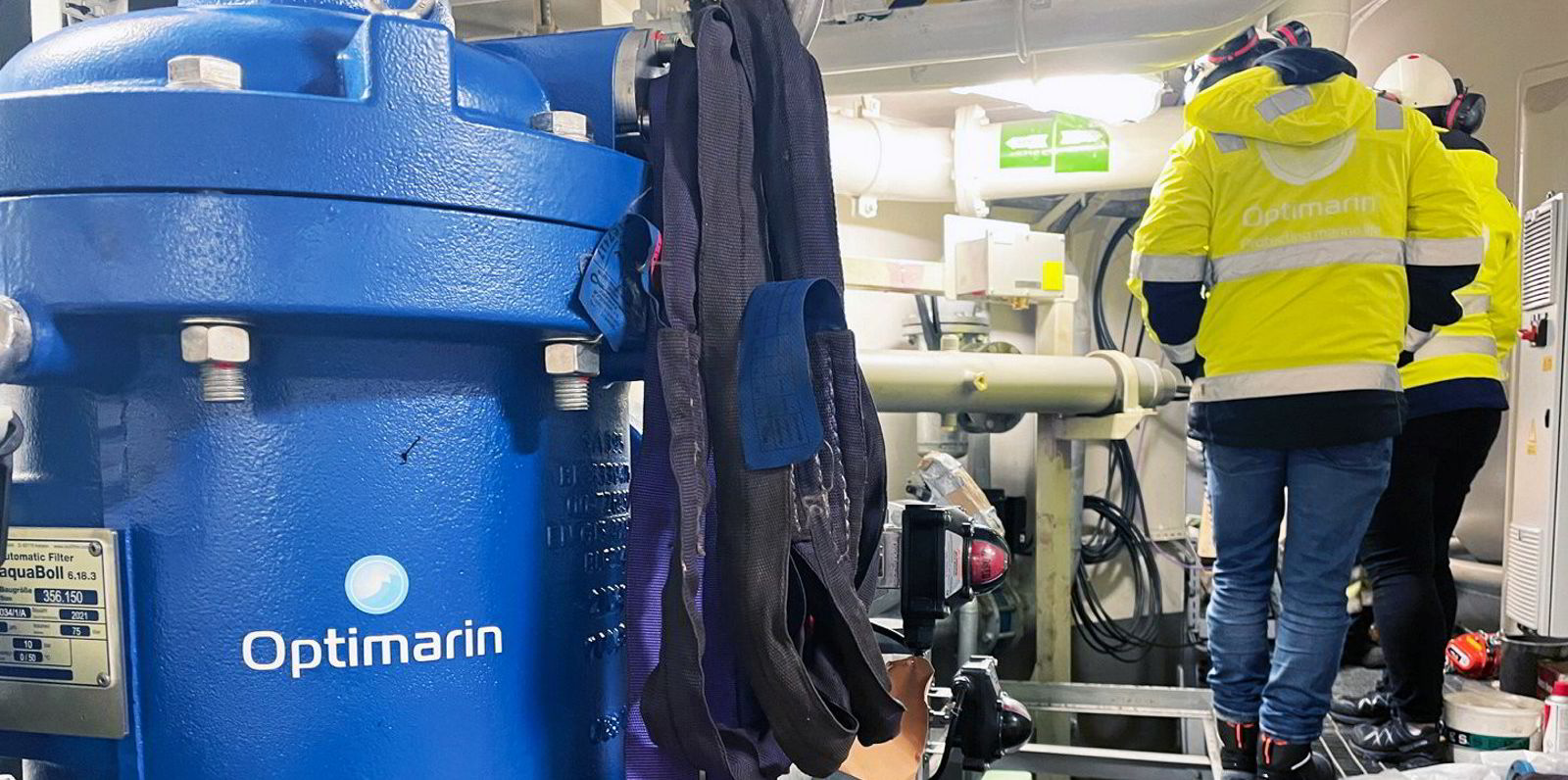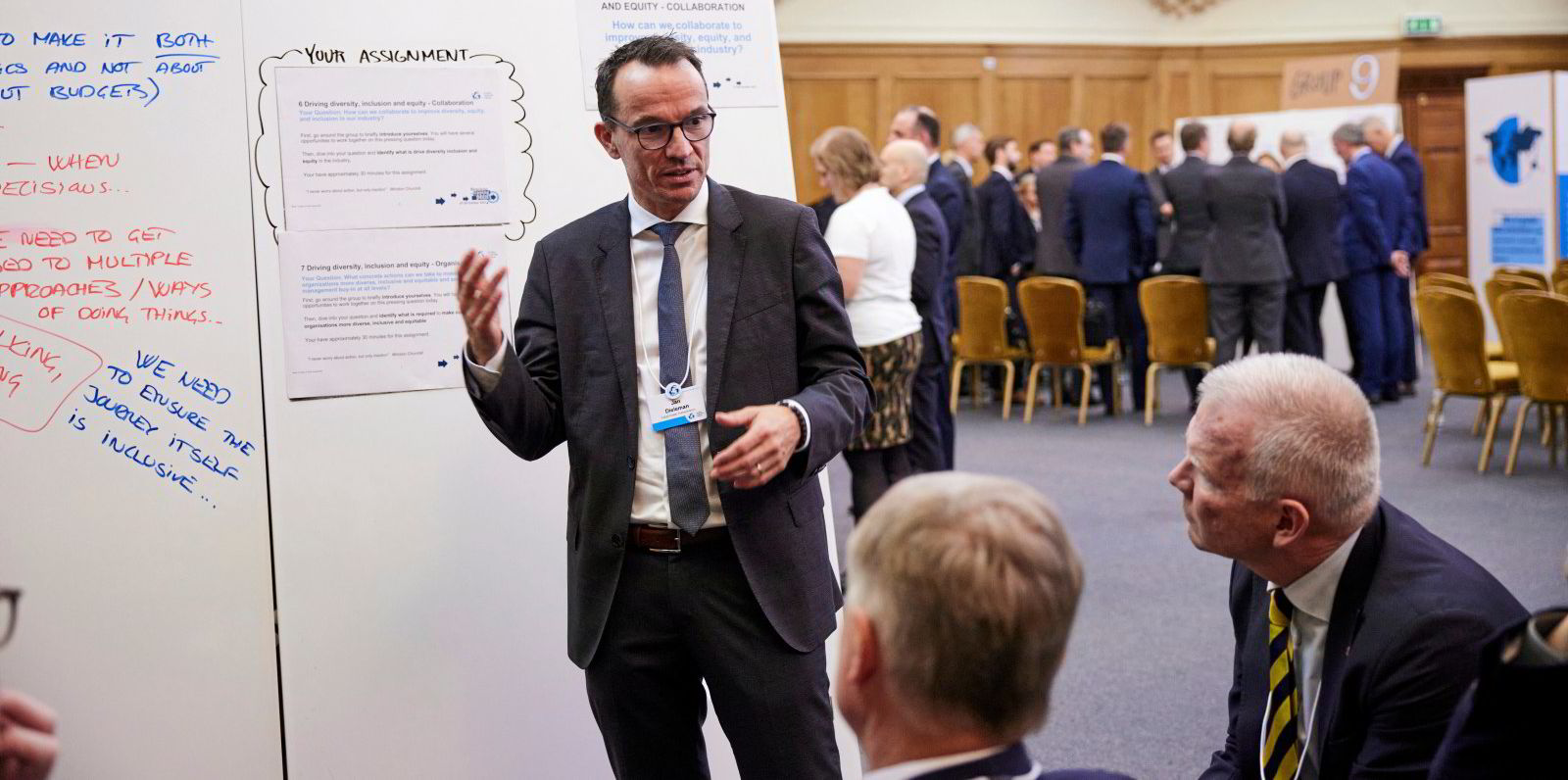When Overseas Shipholding Group (OSG) sought to install a ballast water treatment system on one of the Florida company’s tankers as it operated in Asia, the shipowner thought the equipment would arrive 21 days before work was scheduled to start at a shipyard in South Korea.
But a deeply congested container supply chain sent the shipment along a series of clogged transport legs, and the cargo arrived six weeks late.
“The container movement out of Fort Lauderdale to reach Korea was like a Jules Verne novel,” OSG chief executive Samuel Norton told TradeWinds.
The shipping industry is working to install ballast water treatment systems under a phased schedule set by an international convention that entered into force in 2017 to protect marine environments from invasive species, but the process is continuing to encounter a cavalcade of headaches.
All ultimately derived from the fall-out from the Covid-19 pandemic, the problems are persisting at a peak time for ships to get the costly installations done under the convention’s timeline.
And even as those hurdles ease — including shipyard delays, the difficulty to move technicians around the world and a global shortage of microchips — they have created a backlog that the industry has yet to overcome.
“That has a knock-on effect on the installation,” Sahan Abeysekara, the principal specialist on ballast water management systems at UK classification society Lloyd’s Register, said of the hurdles.
Shipowners that had been due to install their systems in 2020 and 2021 have pushed those installations into this year, as flag states have been approving requests to defer the deadline.
Steeper peak
“So what’s happening is that that peak we were talking about is getting much steeper,” Abeysekara said.
The projects take months of preparations, plus about three weeks of physical installation time, and the push to install at the time of surveys is running against limited dry-dock capacity.

Abeysekara said Lloyd’s Register’s advice to shipowners remains unchanged: don’t wait until the last minute.
The International Convention for the Control and Management of Ships’ Ballast Water and Sediments, also known as the BWM Convention, set out a phased schedule that stretches to 2024, with the installation deadline falling at the time of a key regulatory survey required for ships of 400 gt and above.
Not willing to wait for the convention, the US imposed ballast water requirements even earlier.
Leiv Kallestad, chief executive of Norwegian ballast water system manufacturer Optimarin, said that orders for the equipment are growing rapidly this year.
With the return of Covid-19 restrictions in China, system commissioning and installations have been shifting to Europe and elsewhere, but he said the company “hasn’t missed a heartbeat” with those changes.
Optimarin’s work has seen some impact from problems in the global supply chain, particularly the microchip shortage.
“What we do see at times is that if we have to deliver a system without a chip or electronics card or electronics component, then it might be that the system is commissioned at a later stage,” he said.
Exemptions
However, flag states and classification societies have provided exemptions that allow the later commissioning date for the equipment on vessels.
“So if they leave a port without a commission system, they can get it at the next port,” Kallestad said.
Shipowners that plan ahead are overcoming hurdles, albeit with delays approved by flag states.
OSG, in its recently released sustainability report, said that because of the supply chain and labour availability challenges it faced, the US Coast Guard granted extensions to push back the installation schedule for its tankers and articulated tug barges.
The company expects to catch up, with plans to have systems installed for 100% of its fleet of tankers and articulated tug barges by 2023.

For the world fleet, the path to 2024 has some uncertainties.
Much of the focus has been on ships that are larger than 400 gt, which have to carry out the work by the time of their survey — required every five years — for their International Oil Pollution Prevention certificate.
However, smaller ships, such as large yachts and offshore vessels, that are not subject to these surveys have until 2024.
“If you consider that number, that peak in 2024 is quite high,” said Lloyd’s Register’s Abeysekara. “If you’re pushing through everything, if you’re lagging behind, it could come to a point where maybe we will see in 2024 that it will become unbearable.”




